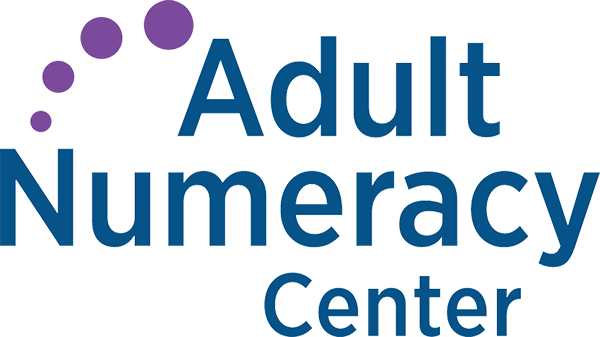What Is Your Homework Strategy?
by Melissa Braaten
For years, I struggled giving homework: what to give students, how much, how to grade or value it. I found I was spending a lot of time creating or searching for assignments that felt meaningful, only to have a very small portion of my students complete it outside of class. In addition, I had a lot of students with different learning challenges, who struggled with many aspects of homework: how to understand the directions, how to get started, how to keep track of the materials, and how and when to hand it in. I decided my homework strategy needed an overhaul, and I needed to start by asking myself why I was giving homework in the first place.
What is the purpose?
The majority of my learners are at earlier levels of math, and many struggle with multiple learning challenges, including executive function. They need careful scaffolding to help them to develop both academic and student skills. I am always looking for ways to get them more math learning, but I have found that having them try to learn or practice new skills outside of class (like a flipped classroom model) was usually not successful. So why give them homework at all?
Cyclical review
First of all, all of my students benefit from cyclical review of concepts they have already learned, both to reinforce and deepen their learning, and to fill in gaps created by gaps in attendance. I decided that homework would be a chance for my students to review concepts they had already worked through and mastered in class. This would make it a good use of their time, while using class time to support the exploration and learning of new concepts.
Formative assessment
How about a weekly check in of how students are doing with the content you have taught earlier in the unit? In addition to review, I decided I wanted homework to function as a consistent source of formative assessment, so I could make decisions about what skills or concepts needed revisiting in class.
Student skill development
I also decided that it was important, even for my beginning level students, that they develop the habit of completing homework, since completing independent assignments is an important contributor to long term academic success. Nevertheless, I don’t want to give adults busywork to do, so I made sure the tasks would function as both review and formative assessment.
Support for students
I wanted to keep giving homework, but I also wanted to do it in a way that would provide more scaffolding for students to be successful at completing it. In addition to making sure the homework was addressing skills and concepts most students had mastered (or close to mastered) in class, I developed a new, predictable structure to my homework.
Predictable structure
I created homework packets for each class that would last for six weeks at a time. Each week, one page would be due, always on the same day of the week. The pages were labeled by week, and students would complete the page, tear it out, and hand it in. Each week’s homework contained four problems that reviewed relevant concepts from earlier in the unit. (I created these in PowerPoint, so I ended up making one problem on each slide, and printing two slides per page, front and back.) I also find that having all the homework pages stapled together in a packet makes it much easier for students to find and not lose them (and to further facilitate this, they always get a neon-colored cover sheet with the class name, times, and my contact information).
Familiar tasks
The consistency (one page per week, always due on the same day), helped many students keep track of and begin completing homework. They could remember the expectation and it felt manageable, especially since the assignments were not long. The same type of tasks would reoccur on homework for multiple weeks, with small variations. This also made it easier for students who had a hard time understanding instructions, since once they completed homework for one week, the next week’s homework would look similar, at least in part.
Timely feedback and accountability
The short, one-page assignments were also quick for me to correct and give feedback, which meant I could usually hand it back in the next class, so students could get feedback in a timely manner, get help, and make needed corrections.
For accountability, I hand out a report every six weeks showing students which assignments they handed in, before they get a new packet.
What is sustainable for me?
Sustainability was a big concern for me. Like every teacher everywhere, I always have multiple priorities competing for my time, and I didn’t want to start a homework routine that I couldn’t keep up with. I needed a way to create and grade homework that was relevant and supportive, but also efficient.
Creating the homework packets ahead of time has worked out well, and they are not nearly as time consuming as my previous attempts at homework since they are short, and most task types are repeated. Sometimes I can purchase or find materials online that I can chop up into smaller tasks. All in all, it usually takes about one afternoon every six weeks to create a new homework packet, and then I don’t have to worry about it for a while.
The short length makes it quick to correct and give feedback, which means I can get them back to students quickly, and make decisions about upcoming classes, and which questions we should go over, or which concepts might need revisiting.
I decided not to grade homework, but to simply mark completion. That makes it easier on my end. Besides, I am using these for formative, rather than summative assessments anyway, so grading didn’t really make sense.
How is it going?
I have kept up this homework routine for the last two years, and it has worked better than any other I have tried in the past. First of all, it has been efficient and sustainable for me, and secondly, I have much higher rates of homework completion, especially in my beginner level classes. Students mostly find the homework helpful and are usually able to complete some or all of it on their own. I also get valuable formative assessment on a regular basis, which helps me make adjustments to my teaching as I go along.
Want to see an example? Click here to download a PDF of a homework packet for a beginner level (GLE 2-4, CCRSAE B) class.

Melissa Braaten is an adult education instructor at Catholic Charities Haitian Multi-Services Center in Dorchester, MA. Melissa has taught ASE and pre-ASE math and reading, as well as ABE writing, computer skills, and health classes. Melissa also is a training and curriculum development specialist for the SABES Mathematics and Adult Numeracy Curriculum & Instruction PD Center at TERC. She is the author of many articles for Math Musings, our Adult Numeracy blog.

